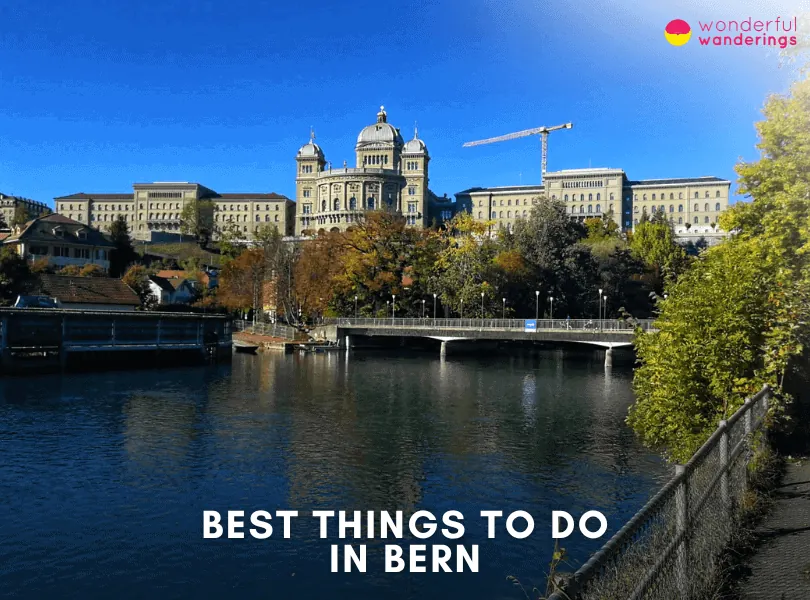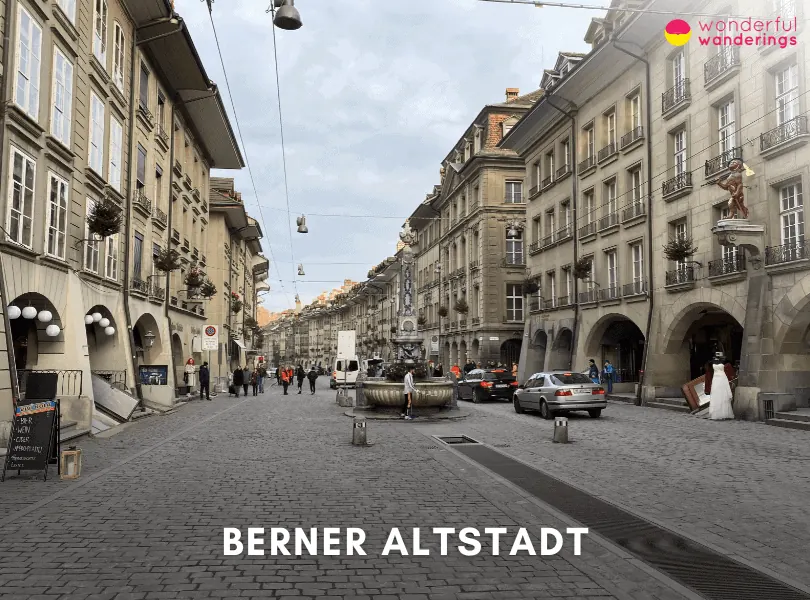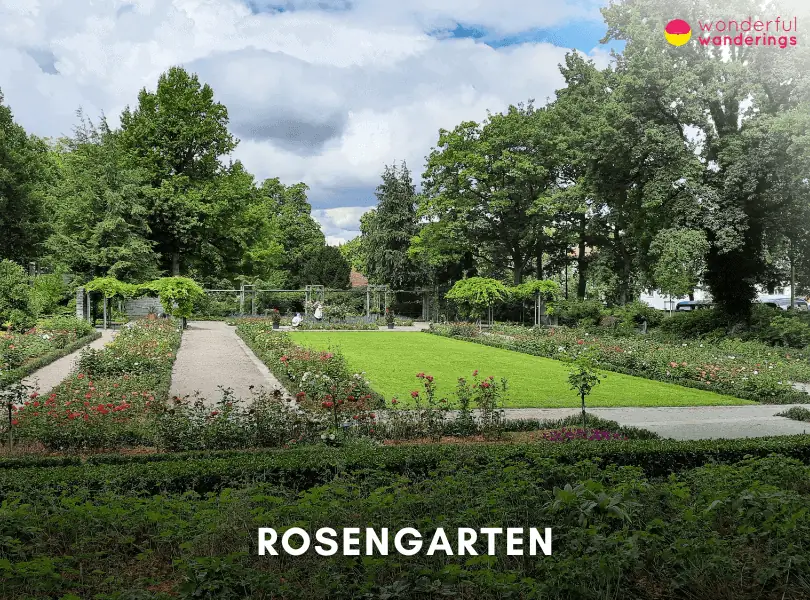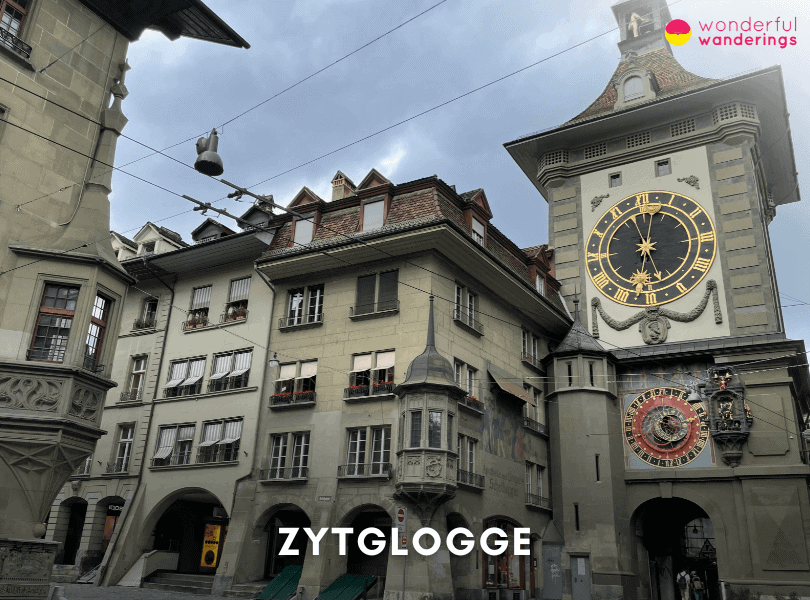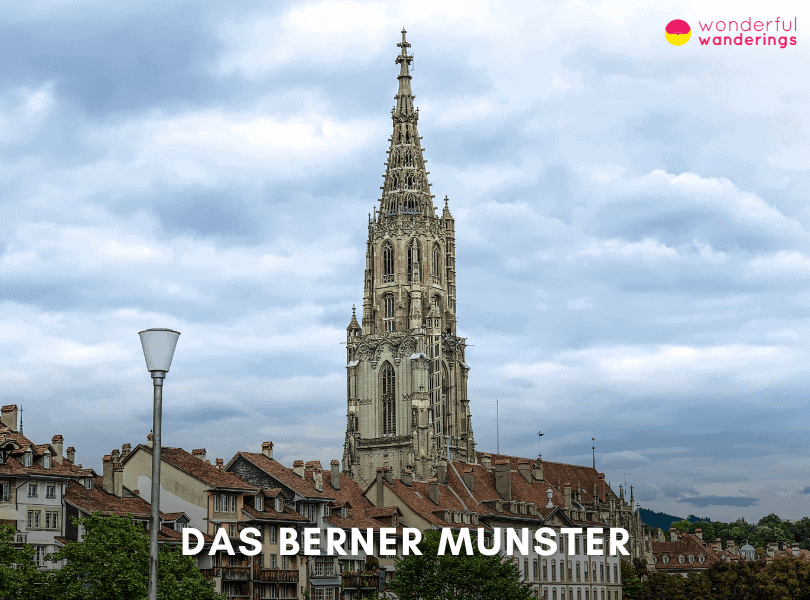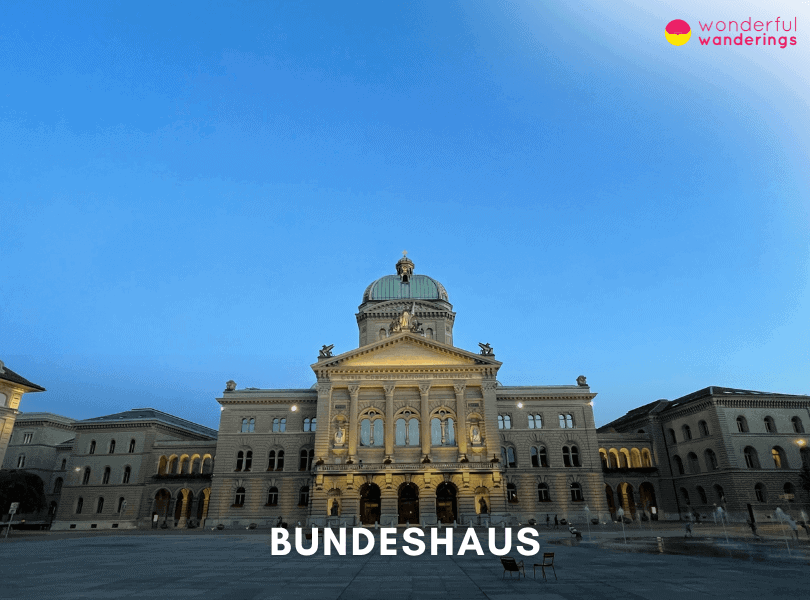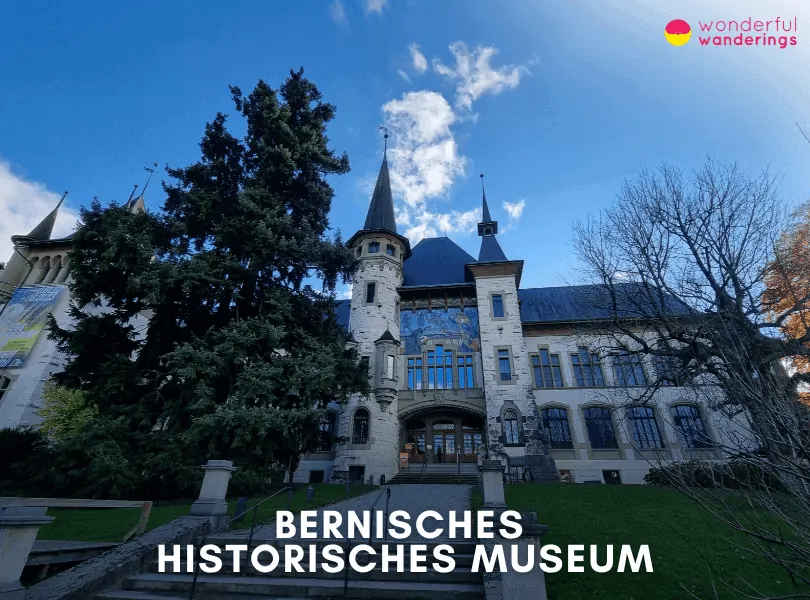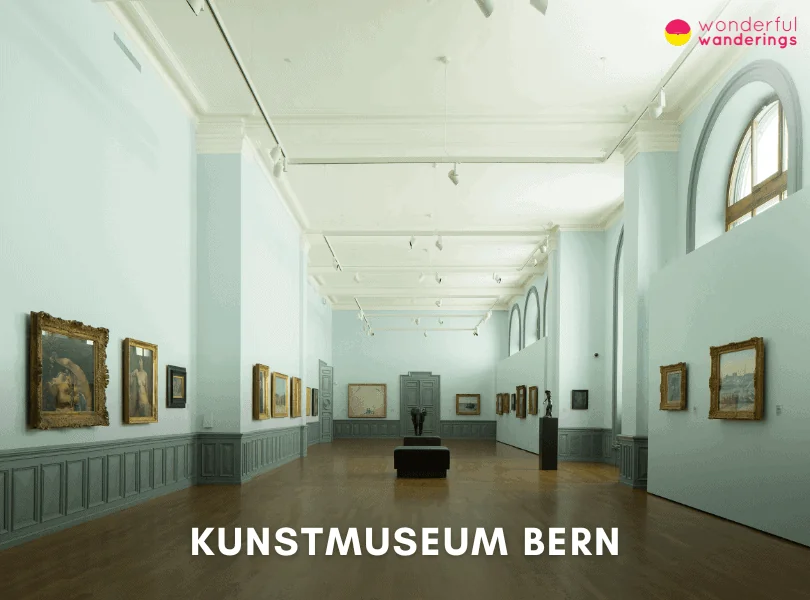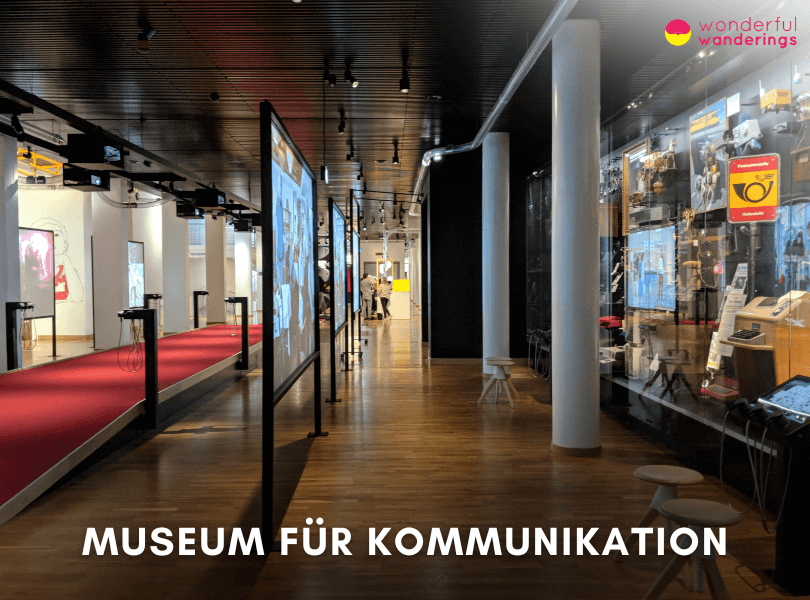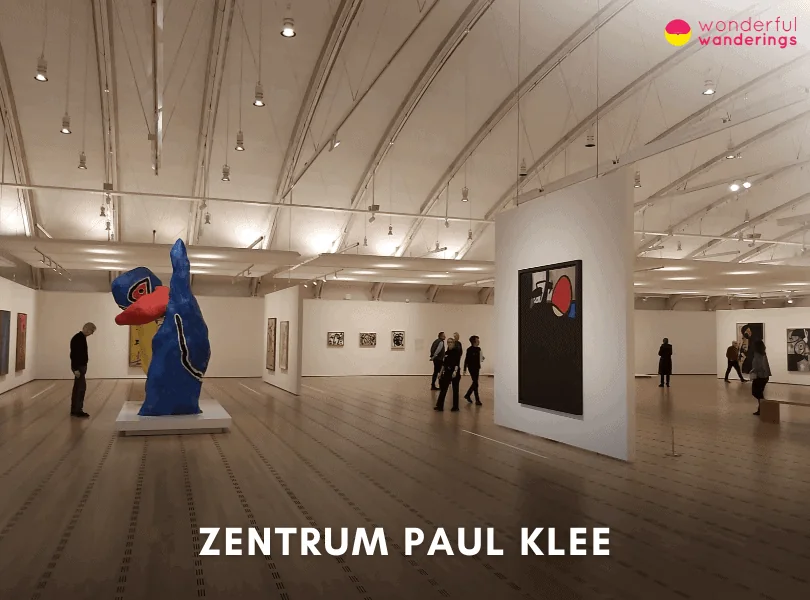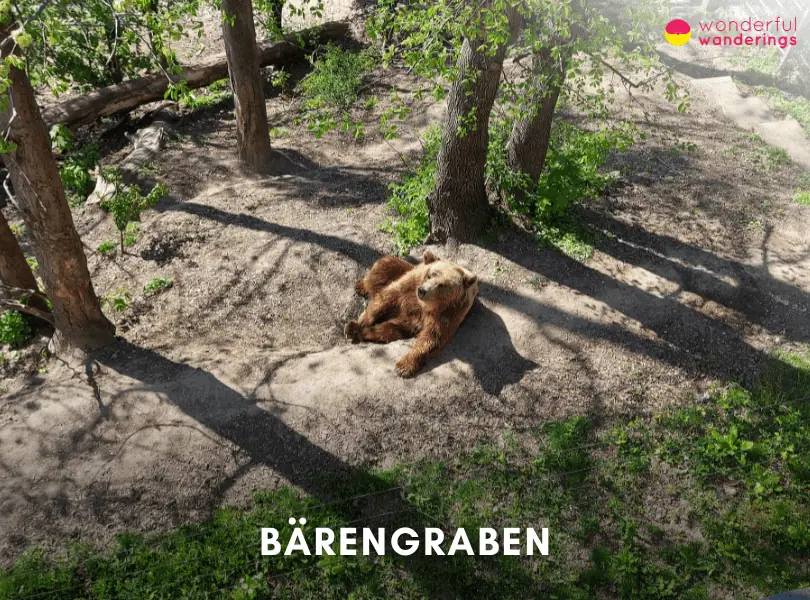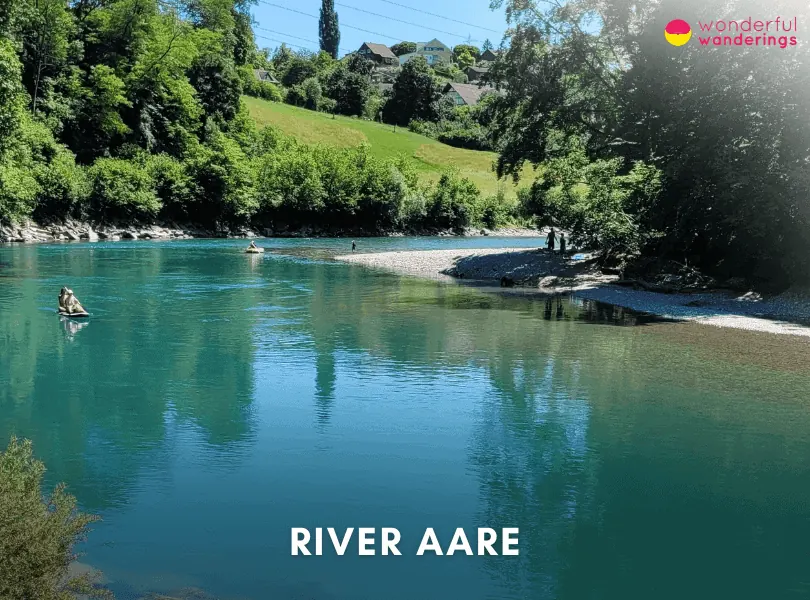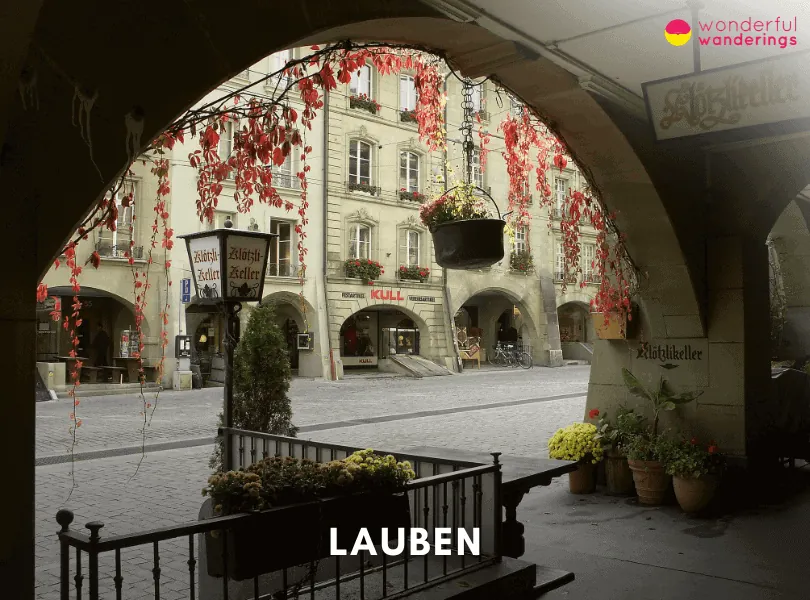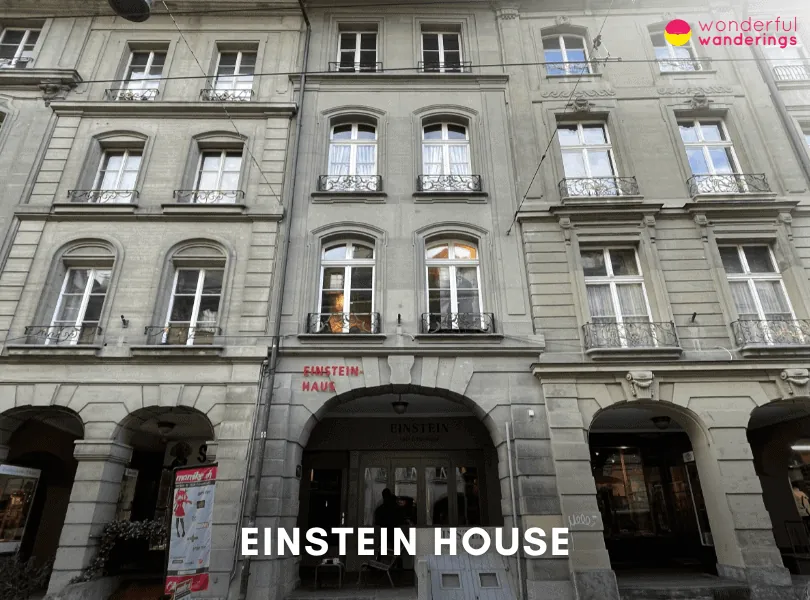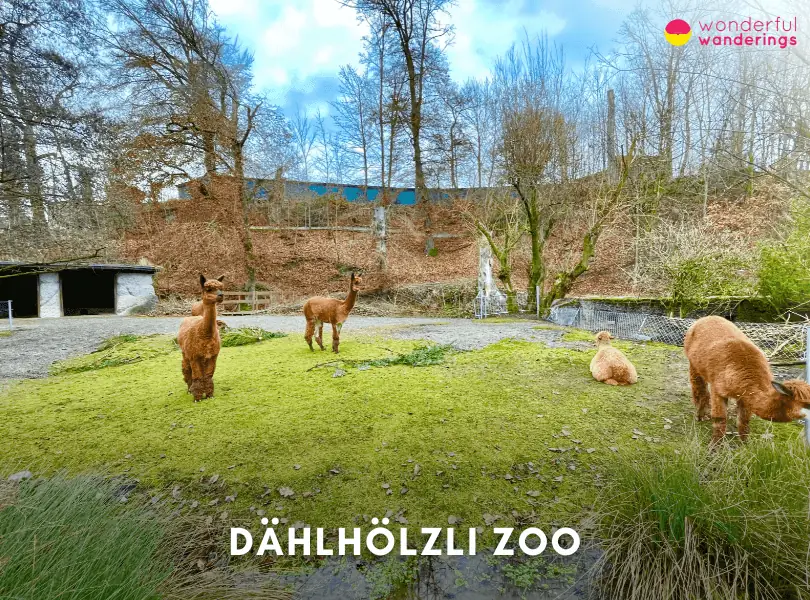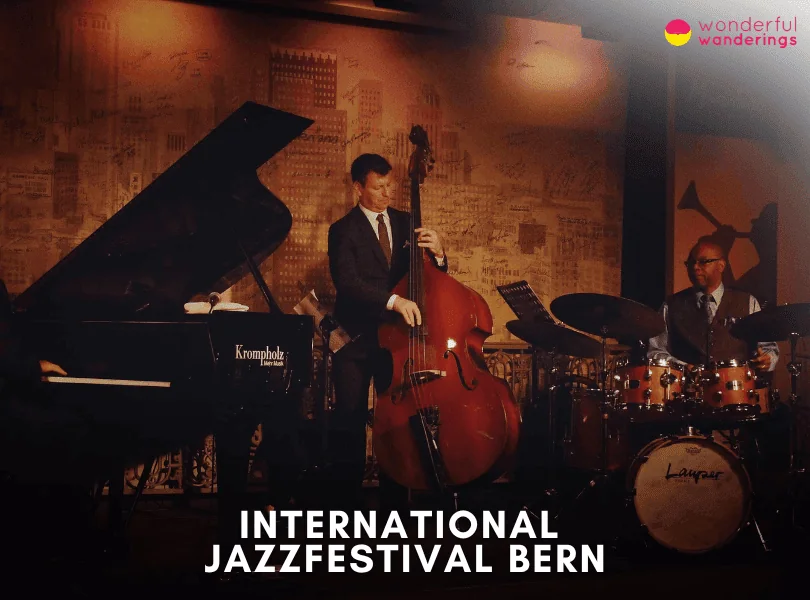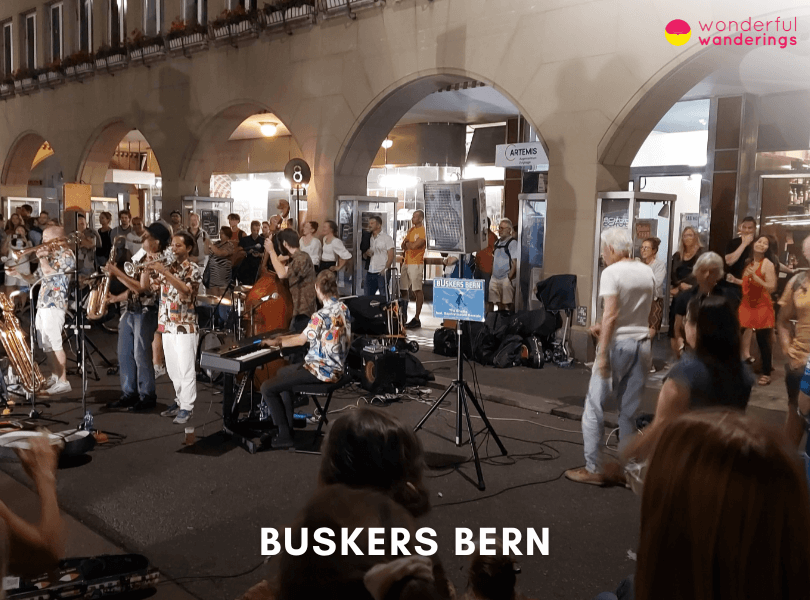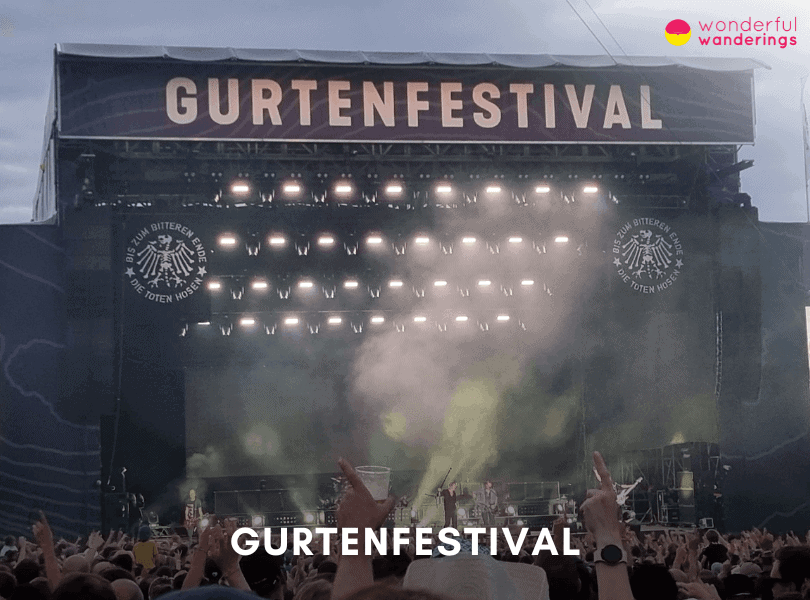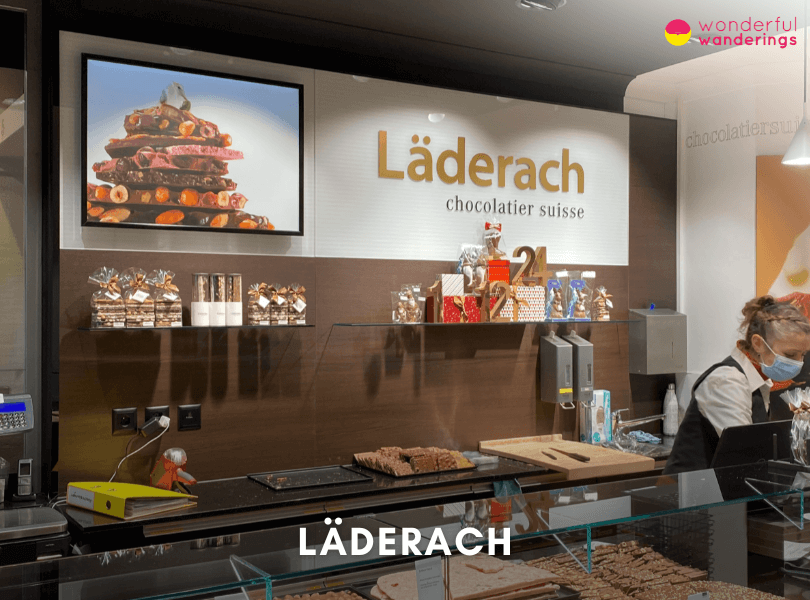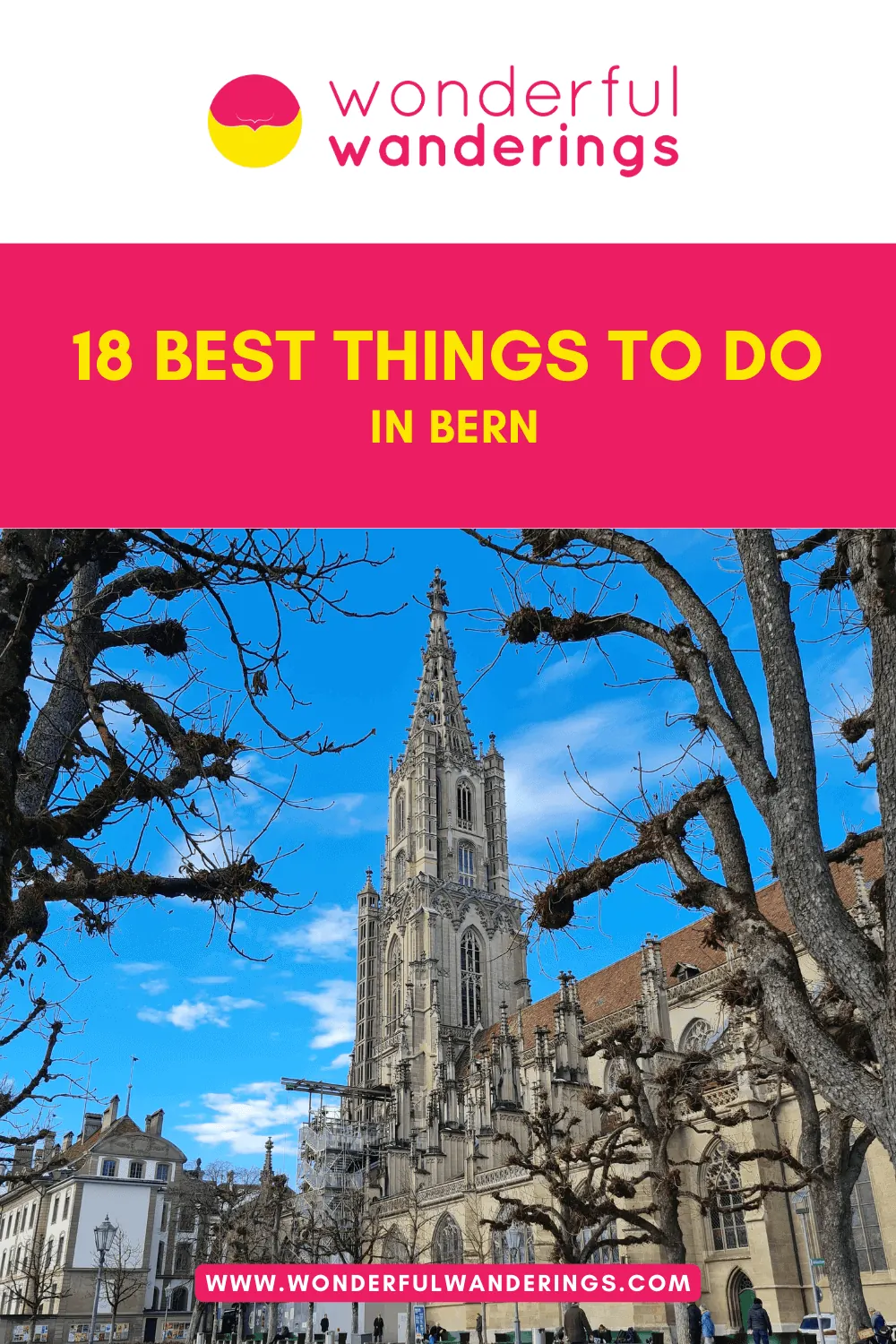Bern, often referred to as the “federal city”, is the de facto capital of Switzerland, located slightly west of the center of the country and north of the Bernese Alps. The city’s coordinates are 46.9480° N, 7.4474° E. The city is part of the Bern-Mittelland administrative district and is governed by a city council (Gemeinderat) with five members and a mayor (Stadtpräsident). Bern is surrounded by the Aare, a major river of the Swiss Plateau and is known for its historic old town (Altstadt) in the center, which became a UNESCO World Heritage Site in 1983. The city is on the Swiss plateau in the canton of Bern, the second most populous of Switzerland’s cantons. Bern is the fifth-most populous city in Switzerland, behind Zurich, Geneva, Basel and Lausanne. As of the latest census, Bern had an estimated population of 133,883.
The city of Bern has a rich history dating back more than 800 years. It was founded by the Dukes of Zähringen in 1191 and joined the Swiss Confederation in 1353. In 1848, Bern was chosen as the capital city of the Confederation. Over the centuries, Bern has evolved into a modern service center, hosting the headquarters of international organizations and companies. Bern is a political center and cultural and educational hub. The city offers a rich and varied range of cultural activities, including theater performances, art exhibitions and concerts. It is known internationally as a center of science and research, particularly in the fields of cutting-edge technology, climate and medicine. Bern is a sporting city, home to top clubs like Young Boys Bern and SC Bern and has hosted international sporting events such as the EURO 2008 football European Championship and the ice hockey world championships.
The city’s architecture is a blend of historic and modern styles, with notable landmarks such as the Federal Palace and the city’s parliament building. Bern is home to several museums, including the Bern Historical Museum and the Natural History Museum, making it a hub of art and culture. Bern is in the Central European Time Zone, which is one hour ahead of Coordinated Universal Time (UTC +01.00). It observes Central European Summer Time from late March through late October, two hours ahead of UTC (UTC +02.00) during Daylight Saving Time.
Listed below are the best things to do in Bern.
- Berner Altstadt. Bern’s Old Town, or Berner Altstadt, located at Grunes Quartier 3011 Bern, is a UNESCO World Heritage site established in the 12th century. This medieval city center, built on a hill surrounded by the Aare River, offers visitors a unique experience of history and culture. It features impressive sandstone buildings, 15th-century arcades and 16th-century fountains. Despite restoration efforts in the 18th century, it has retained its medieval character. Visitors can explore the Bern Bear Park, enjoy the Rosengarten, or visit Albert Einstein’s former residence. The Old Town is home to over 400 varieties of roses and irises in the Rosengarten.
- Rosengarten. Rosengarten is a public park situated at Alter Aargauerstalden 31b, 3006 Bern. Established during the city’s 700th anniversary, it is known for its extensive rose collection and offers visitors a variety of activities, such as leisurely walks, relaxation on park benches and picnics on the lawns. The park features a restaurant where guests can enjoy meals and beverages while admiring the panoramic city views. Rosengarten is open to the public all year round and entry is free.
- Zytglogge. The Zytglogge, located at Bim Zytglogge 3, 3011 Bern, is a medieval clock tower and a significant landmark in Bern. Established in the early 13th century, it has served various purposes, including a guard tower, prison and clock tower. Visitors can explore the Zytglogge through guided tours, which provide insights into its history and the astronomical calendar clock from 1530. The clock features an astrolabium and a musical mechanism that offers an entertaining spectacle before striking the hour.
- Das Berner Munster. Das Berner Munster is located at Münsterplatz 1, 3011 Bern. This Swiss Reformed cathedral, the largest ecclesiastical building in Switzerland, began construction in 1421. The cathedral’s towering structure, completed in 1893, stands as the tallest in the country. The cathedral is home to 234 intricate sandstone figures, representing the Last Judgment. Visitors to the cathedral have the opportunity to explore its grand architecture, admire the sandstone figures and learn about its rich history.
- Bundeshaus. The Federal Palace, located at Bundesplatz 3, CH-3005 Bern, is a historic building that serves as the seat of the Swiss Federal Assembly and the Federal Council. Completed on April 1, 1902, this symmetrical complex extends over 300 meters. The Palace is a national monument, symbolizing Swiss unity and democracy, with its rich artistic decoration and stone sourced from all parts of the country. Visitors to the Federal Palace can explore its architecture and history and attend parliamentary debates when the Federal Assembly is in session.
- Bernisches Historisches Museum. The Bern Historical Museum, located at Helvetiaplatz 5, 3005 Bern, was established in 1894. Designed by André Lambert, it was initially intended to be the Swiss National Museum. Today, it stands as the second largest historical museum in Switzerland, offering a deep dive into the history of Bern and the world. Visitors have the opportunity to explore ten permanent exhibitions, participate in rotating exhibitions and engage in public tours and family ateliers. The museum is particularly noted for its Einstein Museum, which provides insights into the life and work of Albert Einstein
- Kunstmuseum Bern. The Museum of Fine Arts in Bern, situated at Hodlerstrasse 8-12, 3000 Bern, is the oldest art museum in Switzerland, established in 1879. It houses a vast collection of over 50,000 pieces, including more than 4,000 paintings and sculptures and thousands of drawings, prints, photographs, videos and films. The collection spans over 800 years of art history, featuring works from the Gothic period to the present day. Visitors to the museum have the opportunity to explore this extensive collection, which includes works by artists such as Pablo Picasso, Salvador Dalì, Claude Monet, Vincent van Gogh, Paul Klee, Ferdinand Hodler and Meret Oppenheim. The museum hosts thematic exhibitions and major solo exhibitions, providing a diverse experience for art enthusiasts.
1. Berner Altstadt
Old Town in Bern, alternatively known as Berner Altstadt or Alstadt, is a historic and cultural gem on a hill surrounded by the Aare River. The city, founded in the 12th century, has developed over centuries with an exceptionally coherent urban planning concept. The Old Town has buildings from various eras, including 15th-century arcades and 16th-century fountains. Much of the medieval city was restored in the 18th century, yet it has managed to retain its original character. The Old Town has a unique blend of old monuments and modern buildings. Traditional old streets with arcades are still in certain areas, most of which are pedestrian promenades. The city’s Gothic-style cathedral, clock tower and city hall are among the most preserved medieval cityscapes in Switzerland’s major cities. Visitors to the Old Town can explore the Bern Bear Park, enjoy lunch at the Rosengarten, a beautiful park overlooking the city, or learn about one of Bern’s most famous residents, Albert Einstein, at his former residence. The Old Town is home to over 400 varieties of roses and irises in the Rosengarten and a lovely pond with water lilies.
Visitors can reach the Old Town in Bern by taking a tram or bus, as the city has some of the best public transportation in the world. The train station is near the heart of the Old City, making it easily accessible. There is no admission cost to enter the Old Town. It is open to the public year-round. The Old Town is best suited for all visitors, including families, solo travelers and business travelers. It offers a rich cultural experience for history enthusiasts, a peaceful retreat for nature lovers in the Rosengarten and educational insights for those interested in the life of Albert Einstein.
2. Rosengarten
Rosengarten, located at Alter Aargauerstalden 31b, 3006 Bern, is a cherished public park that offers a calm retreat in the heart of the city. The park’s history dates back to the city’s 700th anniversary when it was designed by city gardener Johannes Müller and gifted to the residents of Winterthur as a commemorative present. Known for its extensive rose collection, the park is a horticultural delight with rose species that bloom in a riot of colors. The park’s elevated position offers panoramic views of the city, a popular spot for locals and tourists. Visitors to Rosengarten can enjoy leisurely walks among the beautifully manicured flower beds, relax on the park benches, or have a picnic on the lush lawns. The park features a charming restaurant where visitors can enjoy a meal or a cup of coffee while taking in the dazzling city views. The park is open to the public all year round and entry is free.
Visitors can reach Rosengarten by taking bus number 10 in the direction of “Ostermundigen Rüti” and alighting at the “Rosengarten” stop. The park is accessible on foot from the Bern Animal Park, Bear Park via a short but steep path. It is a destination for all visitors, including families, solo travelers and business travelers. The park’s calm atmosphere and beautiful surroundings make it an ideal spot for those seeking a peaceful retreat in the city.
3. Zytglogge
The Zytglogge, known as the Clock Tower, is a significant landmark in Bern. Situated at Bim Zytglogge 3, 3011 Bern, this medieval tower has a rich history dating back to the early 13th century. Initially, it served as a fortified guard tower, then transitioned into a prison, a lookout and fire observation tower and eventually, a clock tower. Over the centuries, the Zytglogge has played various key roles in the city’s development and is now one of Bern’s most recognizable symbols and the oldest monument in the city. The Zytglogge stands tall in the Old Town, once a city gate, now attracting spectators from all over the world. As the clock prepares to strike the hour, large groups gather to watch the unique performance that takes place. Mechanical figures, including a parade of bears, a jester, a golden rooster and Chronos, the god of time, captivate visitors of all ages. Inside the tower, time seems to stand still with medieval clockwork mechanisms, thick stone walls and massive wooden beams. Those who climb the 130 steps inside the structure are rewarded with a breathtaking view of the UNESCO World Heritage Site, with its tiled roofs, terraces and narrow lanes. Visitors can explore the Zytglogge through guided tours available all year round. These tours offer a deep dive into the tower’s history and its astronomical calendar clock from 1530. The clock’s outstanding features include an astrolabium and a musical mechanism installed in 1530. The astrolabium, an astronomical calendar clock and the musical mechanism provide an entertaining spectacle right before the clock strikes the hour.
Visitors can reach the Zytglogge via public transportation available in Bern. The admission cost for adults is €18.20 ($20, £15.20), for children aged 6–16 it is €9.10 ($10, £7.60) and for seniors/students, it’s €16.40 ($18, £13.70). The Zytglogge is suitable for individuals, couples and groups, making it an ideal destination for families, solo travelers and history enthusiasts. It is recommended to reserve in advance due to the limited number of participants allowed per tour.
4. Das Berner Munster
Bern Cathedral, or Das Berner Munster, is a significant landmark in Bern. It is the largest ecclesiastical building in the country, standing tall and proud in the city’s landscape. The cathedral is at Münsterplatz 1, 3011 Bern, a central location in the city. The cathedral’s history is rich and fascinating, with its construction beginning in the 15th century and taking several centuries to complete. The cathedral is particularly notable for its intricate sandstone figures, which number 234 in total and represent the Last Judgment. Visitors to Bern Cathedral can explore the grandeur of this historic structure. Visitors can admire the finely crafted sandstone figures, each telling a unique story.
Visitors can reach Bern Cathedral by various means of transport available in the city. The cathedral’s central location makes it easily accessible. The cathedral is open daily, with keepers present between 0800-1700. There is no admission fee, making it accessible to all who wish to visit. It is ideal for visitors, including families, solo travelers and history enthusiasts. The cathedral’s rich history and architectural beauty make it a must-visit for anyone interested in historical structures and religious art.
5. Bundeshaus
The Federal Palace, known as Bundeshaus in German, Palais fédéral in French, Palazzo federale in Italian, Chasa federala in Romansh and Curia Confœderationis Helveticæ in Latin, is a significant building in Bern. It is at Bundesplatz 3, CH-3005 Bern. The Federal Palace is the seat of the Swiss Federal Assembly (legislature) and the Federal Council (executive). The construction of the Federal Palace was completed on April 1, 1902. The building is a listed symmetrical complex that extends just over 300 meters long. It is one of the most important historic buildings in Switzerland and is listed in the Swiss Inventory of Cultural Assets of National Importance. The Federal Palace consists of three interconnected buildings in the southwest of Bern. The two chambers of the Federal Assembly, the National Council and the Council of States, meet in the parliament building on Bundesplatz. The oldest part of the Federal Palace is the west wing, built from 1852 to 1857 under Jakob Friedrich Studer. This building united the federal administration, government and parliament under one roof. The east wing was built from 1884 to 1892. The parliament building in the center was erected between 1894 and 1902 to conclude the project. The Federal Palace is a symbol of Swiss unity and democracy. The rich artistic decoration, whose symbolism is based on the history, constitutional foundations and cultural diversity of Switzerland, as well as stone used from all parts of the country, underlines the character of the parliament building as a national monument. Visitors to the Federal Palace can explore the building’s architecture and history. Visitors can attend parliamentary debates when the Federal Assembly is in session, providing a unique insight into Swiss politics.
Visitors can reach the Federal Palace by foot from Bern’s city center. It is conveniently located and easily accessible by public transportation. There is no admission cost to enter the Federal Palace, making it accessible to all who wish to visit. The Federal Palace is suitable for visitors, including families, solo travelers, students and anyone interested in Swiss history, politics, or architecture.
6. Bernisches Historisches Museum
The Bern Historical Museum, known as Bernisches Historisches Museum or Musée d’Histoire de Berne, is the second largest historical museum in Switzerland, at Helvetiaplatz 5, 3005 Bern. The museum was designed by André Lambert, a Neuchâtel architect and was built in 1894. Initially, it was conceived as the Swiss National Museum, which was later hosted by the city of Zurich. The design of the museum was inspired by various historic castles from the 15th and 16th centuries. An extension to the original museum building was completed in 2009. The museum houses collections related to the history of Bern from prehistoric times to the present, along with other artifacts on permanent display from Asia, Oceania, America and Egypt. One of the most remarkable items in the collection is the Muri statuette group, a group of six Gallo-Roman bronze figurines. The museum is a heritage site of national significance and features a glass mosaic, “The Age of History”, made in 1900 by the Swiss painter Léo-Paul Robert. The museum is special for its Einstein Museum, dedicated to the life and work of Albert Einstein, who developed the Theory of Relativity while living in Bern. Visitors can explore the museum’s collections, learn about the history of Bern and the world and gain insights into Albert Einstein’s life and work. Visitors to the Bern Historical Museum can explore ten permanent exhibitions devoted to history, archaeology and ethnography. Visitors can participate in various exciting rotating exhibitions housed in the museum’s modern addition. The museum offers public tours and family ateliers, where visitors can engage in crafting, experiments and trying things out.
Visitors can reach the Bern Historical Museum by public transportation or by walking from the city center. The admission cost for adults is €15 ($17, £13), with concessions available for groups of 10 or more people, apprentices, students, people living on old-age and survivors’ insurance or invalidity insurance and people with disabilities. Children from 6 to 16 years old €7.5 ($8.5, £6.5). The museum offers free entry for school classes from Switzerland. The Bern Historical Museum is best suited for families, students, history enthusiasts and solo travelers. It provides a rich educational experience for school classes and offers a unique insight into various cultures and historical periods, making it an ideal destination for those interested in history and culture.
7. Kunstmuseum Bern
The Museum of Fine Arts in Bern, known as Kunstmuseum Bern, is located at Hodlerstrasse 8-12, 3000 Bern. It is the oldest art museum in the country, with a collection that spans over 800 years of art history and includes more than 50,000 pieces from around the world. The museum features works by famous artists such as Pablo Picasso, Salvador Dalì, Claude Monet and Vincent van Gogh, as well as prominent Swiss artists like Paul Klee, Ferdinand Hodler and Meret Oppenheim. Visitors to the Museum of Fine Arts can explore the extensive collection, which ranges from the Gothic period to the present day. The museum houses over 4,000 paintings and sculptures, as well as thousands of drawings, prints, photographs, videos and films. In addition to the permanent collection, the museum hosts thematic exhibitions and major solo exhibitions, offering a diverse and engaging experience for art enthusiasts.
Visitors can reach the Museum of Fine Arts by walking from Bern’s railway station, a 5-minute walk away. The admission cost for adults is €9.30 ($10.50, £7.90), with reduced prices available for students and other eligible visitors. The Museum of Fine Arts is suitable for a wide range of visitors, including families, solo travelers, students and art enthusiasts, offering a rich cultural experience and insight into various artistic periods and styles.
8. Museum für Kommunikation
The Museum of Communication, known as Museum für Kommunikation, is a unique institution at Helvetiastrasse 16, 3000 Bern. This museum, nestled in the heart of Bern, is a testament to the evolution of communication, tracing its journey from hilltop fires to modern smartphones. The museum was established in the early 20th century, with its foundation stone laid in 1893 when the Swiss postal service decided to collect historical objects for a future Post Museum. The museum’s collection represents a record of the evolution of communication, focusing on the history of media and their interactions with Swiss society. It includes technological artifacts and highlights their associated cultural techniques, processes and stories. The Museum of Communication offers a unique experience to its visitors. It houses interactive displays, surprising objects and large-scale video screens. Visitors can learn about nonverbal communication, send messages through analog tubes, discover the secrets of effective flirting and identify Swiss dialects using an interactive map. Visitors can explore the museum’s Datacenter area, which raises important questions about privacy, agency and waste. The museum’s staff, trained and multilingual, are a quintessential part of the exhibits, ready to explain anything from the concept of collective memory to why we communicate.
Visitors can reach the Museum of Communication by public transport available in Bern. The museum is open from Tuesday to Sunday, from 10 AM to 5 PM. The admission cost is €13.5 (£11.5, $15) for adults, €9 (£7.7, $10) for students and pensioners and €4.5 (£3.8, $5) for children aged 5-16. Children under six years of age can enter for free. The Museum of Communication is best suited for families, solo travelers and students interested in the history and evolution of communication. It offers a unique learning experience for children, with numerous interactive stations and activities specifically aimed at children between the ages of four and eight. The museum hosts temporary exhibitions.
9. Zentrum Paul Klee
The Zentrum Paul Klee, located at Monument im Fruchtland 3, 3006 Bern, is a museum dedicated to the life and work of the German-Swiss artist Paul Klee. The museum houses one of the most extensive monographic collections in the world, with around 4,000 works of art by Klee. Designed by the famous architect Renzo Piano, the museum’s architecture is inspired by the rolling hills of the surrounding landscape, featuring a curved roof made of long steel beams that blend seamlessly with the natural environment. Visitors to the Zentrum Paul Klee can explore the museum’s vast collection of Klee’s works, including watercolors, canvases and drawings. The museum offers various cultural and educational programs, providing a comprehensive insight into the artist’s life and creative process. Visitors can stroll down the museum “street”, which connects the three parts of the building and offers access to the information center, museum shop and café.
Visitors can reach the Zentrum Paul Klee by public transportation or by following special routes known as “Klee’s paths” that lead from the museum into the city. The admission cost for adults is €18.60 ($21.20, £15.80), while children aged 6-16 years old are charged €6.50 ($7.40, £5.50). The Zentrum Paul Klee is suitable for a wide range of visitors, including families, solo travelers, students and art enthusiasts, offering a unique and engaging experience for those interested in the life and work of Paul Klee.
10. Bärengraben
Bärengraben, alternatively known as BärenPark, is a notable attraction in Bern. It is at Grosser Muristalden 6, 3006 Bern, near the city center. The Bärengraben, or Bear Pit, has a rich history dating back to 1857 when it was a concrete enclosure for the city’s bears. The bear is a significant symbol for Bern, chosen by Berthold V, Duke of Zähringen, who named the city after the first animal he killed in a hunt. The Bärengraben was transformed into BärenPark in 2009, providing a more natural and spacious environment for the bears. The park spans 6000 square meters, extending from the original Bärengraben to the banks of the Aare River. Visitors can observe the bears in their natural behaviors, such as playing, feeding, climbing and swimming. The park is part of the larger Tierpark Bern, which includes another facility, Dählhölzli. Visitors can explore the park, observe the bears and learn about their history and significance to the city of Bern. The park is open all year round and is suitable for individuals, couples and families, including children of all ages.
Visitors can reach Bärengraben by foot from the city center of Bern. The park is easily accessible and well-signposted. There is no admission cost to enter Bärengraben, making it a budget-friendly option for travelers. The park is best suited for families, solo travelers and couples who are interested in nature and the cultural history of Bern.
11. River Aare
The River Aare, alternatively known as Aar, is a significant waterway in Switzerland. It is the longest river that originates and ends entirely within the country. The Aare originates from the Oberaar glacier in the eastern Bernese Alps, flows through lakes Brienz and Thun, passes by the federal capital of Bern, is channeled into Lake Biel, follows the southern foot of the Jura range and finally flows into the Rhine at Koblenz, in north-western Switzerland. The river spans a length of approximately 291.5 kilometers (181.1 miles). The Aare has a rich history dating back to at least the Roman era, with its name attested as Nantaror “Aare valley” in the Roman era. The name was later Latinized as Arula / Arola / Araris. The river has a significant role in shaping the geography and culture of Switzerland. It drains an area of 17,779 square kilometers (6,865 square miles), almost entirely within Switzerland, accounting for close to half the area of the country. Visitors to the Aare can engage in various activities. During the summer, locals and tourists enjoy swimming, rafting and surfing in the river. Swimming in the Aare is recommended for experienced swimmers due to the river’s strong current. The river’s floodplains are sensitive ecosystems and almost the entire river landscape between Thun and Bern is protected, making it a haven for nature lovers.
Visitors can reach the Aare by traveling to the city of Bern, which the river passes through. Bern is well connected by road and rail networks, making it easily accessible from various parts of Switzerland and neighboring countries. There is no admission cost to visit the river, making it a cost-effective destination for tourists. The Aare is suitable for a wide range of audiences, including families, solo travelers and nature enthusiasts.
12. Lauben
Lauben, located in Bern, is a unique and historically significant area. The term “Lauben” translates from German into English as a network of branches, a shaded place, a bower, a loggia, a veranda, or a gallery, indicating a covered space or pavilion. This description aptly fits the Lauben in Bern, known for its covered arcades, providing a unique architectural feature and a distinctive shopping experience. The Lauben is a network of covered walkways that line the streets of Bern, offering shelter and shade. These arcades house shops, cafes and restaurants making it a bustling hub of activity. Visitors to the Lauben can stroll through the arcades, exploring the various shops and eateries. The area is perfect for people-watching and soaking in the local culture.
Visitors can reach Lauben by public transportation, as Bern has an efficient network of trams and buses. The area is easily accessible on foot for those in the city center. Lauben has no admission fee as it is a public area. Lauben is for all visitors, including families, solo travelers and business travelers. It offers a unique shopping experience and a glimpse into the local culture and history of Bern. Lauben is a testament to Bern’s rich history and architectural heritage. It offers a unique blend of the old and the new, with its historic arcades housing modern shops and restaurants. This juxtaposition of the past and the present makes Lauben a special place to visit in Bern.
13. Einstein House
The Einstein House, or Einsteinhaus Bern, is a museum at Kramgasse 49, Bern. This historic site served as the residence of Albert Einstein from 1903 to 1905, during his tenure at the Swiss Patent Office. It was in this house that Einstein penned four revolutionary papers, laying the foundation for modern physics and securing his Nobel Prize in Physics in 1921. The house, furnished with early 20th-century items, showcases Einstein’s modest living conditions, featuring the second-floor apartment where he resided with his wife Mileva and son Hans Albert. The apartment offers a glimpse into Einstein’s life. The museum further enriches the visitor experience with an exhibition detailing Einstein’s life, scientific achievements and global influence, complete with a multimedia presentation, photographs, letters and personal items. Visitors can explore the Einstein House and its exhibits. They can walk through the rooms where Einstein lived, gaining insight into his daily life and the environment in which he made his groundbreaking discoveries.
Visitors can reach the Einstein House by a 10-minute walk from Bern’s main train station or by taking tram number 9 to the ‘Zytglogge’ stop, steps away from the house. The admission fee is €5.5 ($6.2, £4.7) for adults €4.1 ($4.6, £3.5) for students and seniors and free for children under six years old. The Einstein House is a suitable destination for all types of visitors, including families, solo travelers and history and science enthusiasts, offering a unique opportunity to learn about one of the most influential scientists of the 20th century in the very place where he made some of his most significant discoveries.
14. Dählhölzli Zoo
Dählhölzli Zoo, known as Dählhölzli Animal Park, is a popular attraction located in Bern. This zoo is lodged in a forest and situated directly on the Aare River, offering a unique experience for adults and children. It is home to around 200 species of animals, including leopards, wolves, monkeys and many more. The zoo features a public and free petting zoo with dwarf goats, mini pigs and dwarf donkeys. The vivarium houses monkeys, turtles, snakes, crocodiles and fish of all colors and sizes. Visitors can observe and marvel at seals and puffins in the outdoor enclosures. If lucky, one might even spot a leopard or an adorable snow fox. Visitors can engross themselves in the underwater world of the Amazon, Reef and Mangrove in three large water landscapes. The zoo offers a unique opportunity to know Switzerland’s wildlife past and present. The vivarium tempts with exotic mammals, birds, reptiles, amphibians and insects.
Visitors can reach Dählhölzli Zoo by bus line 19 from Bern, Hauptbahnhof (at Leinenweberei Bern). Visitors should travel in the direction of Elfenau until they reach the “Tierpark” stop. After alighting, visitors should turn right into Thormannstrasse. At the edge of the forest, after the three eagle owls, they will find the first orientation board. The admission cost for adults, 16 years and above, is €10.20 ($11.60, £8.60), while for children aged 6 to 15 years, it is €6.50, £5.50, $7.40). Children up to 5 years old can enter for free. There are discounted rates for families, retirees, students and members of the Tierparkverein. The Dählhölzli Zoo is ideal for families with kids. It has a petting zoo and a large playground. It is suitable for solo travelers, business travelers and groups. The zoo offers an educational experience, making it the choice for school trips.
15. International Jazzfestival Bern
The Bern International Jazz Festival, known as the International Jazzfestival Bern, is a significant event in jazz music. It is held annually in Bern, at Marians Jazzroom, at Engestrasse 54, CH-3012 Bern. The festival has a rich history, founded in 1976 by Hans Zurbrügg, affectionately known as “Mr Jazz” to the locals. Unlike many other jazz festivals, the Bern event has always focused on pure jazz, avoiding reliance on pop stars to generate mass appeal. This commitment to the genre has helped the festival maintain its appeal to die-hard jazz fans over the years. The festival attracts leading lights of the international jazz scene. Over the years, it has seen performances from jazz greats such as B.B. King, Fats Domino, Ella Fitzgerald and Etta James. The festival is unique in its commitment to nurturing new talent, providing a platform for music students from Switzerland and New York to perform on stage for the first time. Visitors to the Bern International Jazz Festival can enjoy more than 200 individual concerts, featuring international musicians and world-class performers. The festival is a significant event in the Swiss cultural calendar, drawing 30,000 jazz enthusiasts annually.
Visitors can reach the festival by traveling to Bern, the capital city of Switzerland. The festival is held at Marians Jazzroom, a stylish and well-known concert club at the Hotel “Innere Enge.” Admission to the festival is free for the public, with tickets available in advance at the Tourist Information at Bern main station. The festival is best suited for music lovers, jazz enthusiasts and cultural explorers, making it an ideal event for solo travelers, families and groups of friends.
16. Buskers Bern
Buskers Bern Street Music Festival, alternatively known as Buskers Bern, is a unique annual cultural event in the Old Town of Bern, specifically in Altstadt Bern, 3011 Bern. The festival was first held in 2004 and has since become a beloved tradition, attracting over 70,000 visitors. The festival celebrates street performances featuring artists and musicians from all over the world who bring a touch of color to the alleys of Bern’s city center. Over three days, the festival hosts more than 150 performing artists who entertain audiences with music, dance, comedy, puppet theater, art and more. The festival allows visitors to directly support the performers by throwing money into their hats, known as “hat money”. This direct payment is a testament to the festival’s commitment to supporting artists and creating a lively, interactive cultural experience. Visitors to the Buskers Bern Street Music Festival can enjoy activities. They can explore the various stages at the festival grounds, each hosting a different performance. Visitors can participate in the children’s program on the cathedral platform, which starts earlier in the day. In addition to the performances, the festival offers a wide range of international and regional food specialties from around 60 food stalls. Visitors can attend the after-party at the Kornhausforum, which lasts until the early hours.
Visitors can reach the Buskers Bern Street Music Festival by public transportation, as the festival takes place in the Old Town of Bern, which is well-connected by public transit. The festival does not provide parking. The admission cost for the festival is the purchase of a festival booklet and a bracelet for €18.60 (£15.70, $20.90). A bracelet for children costs €4.65 (£3.92, $5.23). The festival is a non-profit event and the purchases help finance the event and ensure its continuation. The festival is for all types of people, including families, solo travelers and music and art enthusiasts. It offers a unique experience that combines music, art and community in a historic city setting.
17. Gurtenfestival
Gurtenfestival is a popular music festival held annually in Bern, at Gurten-Park im Grünen, 3084 Wabern. Known as Gurtenfestival Bern, the event takes place over four days in July, attracting thousands of visitors annually. The festival, established in 1977, has grown to become a significant cultural event in Switzerland, featuring a diverse lineup of local and international artists across various genres, including rock, pop, electronic and hip-hop. The festival is set on Gurten Hill, offering a unique atmosphere and impressive views of the surrounding area. Visitors to Gurtenfestival can enjoy live performances on multiple stages, food and drink options, art installations and other entertainment. The festival is known for its inclusive and welcoming atmosphere, making it an ideal destination for music lovers of all ages and backgrounds.
Visitors can reach Gurtenfestival by taking public transportation, as the festival’s wristband grants free access to buses, trams and S-Bahn trains within the Libero zones 100/101, including the Gurtenbahn funicular. Ticket prices for the festival vary depending on the duration of attendance, with options for one-day, two-day, three-day and four-day passes and comfort passes that offer additional amenities and access to exclusive areas. The festival is suitable for a wide range of audiences, including families, solo travelers and groups of friends, providing a memorable experience for all who attend.
18. Läderach
Läderach is a Swiss chocolatier, known for its high-quality chocolates and confectionery. It is in Bern, a city known for its rich history and cultural heritage. Läderach, known as “Läderach – chocolatier suisse”, has a rich history that dates back to 2004 when it purchased Merkur Confiserien AG and simultaneously introduced its FrischSchoggi, a chocolate that customers can break off in desired quantities from large slabs at the counters of the branches. The company is unique for its handcrafted chocolates made with premium ingredients, offering a unique sensory experience of the most authentic chocolate flavors and textures. Visitors to Läderach can explore chocolates, including milk chocolate, dark chocolate and white chocolate, with various ingredients like nuts and fruits. Visitors can participate in factory tours and visit the chocolate museum, enhancing their understanding of chocolate making. Läderach has been expanding its presence globally, with boutiques in 16 countries and a workforce of around 1,700 employees from 50 nations. It has 150 boutiques. The company’s most-sold products include hazelnut milk chocolate and Dark Almond chocolate. In addition to these, Läderach offers various chocolate snacks, seasonal items and gift articles. Since 2022, the company has introduced a vegan chocolate line with four products based on cashew drinks.
Visitors can reach Läderach in Bern by various means of transport available in the city. The admission cost for the chocolate museum starts from €4.60 ($5.10, £3.90) and for the factory tour, it is €37 ($41, £31). The activities at Läderach are suitable for a wide range of audiences, including children, families, groups, individuals and couples, making it a versatile destination for all types of travelers.
What are the best museums to visit in Bern?
Listed below are the best museums to visit in Bern.
- Bern Historical Museum. The Bern Historical Museum, located in Helvetiaplatz, Bern, is the second-largest historical museum in the country. Established in 1894, it houses collections related to the history of Bern from prehistoric times to the present, as well as artifacts from Asia, Oceania, America and Egypt. The museum is a heritage site of national significance and features the Einstein Museum, dedicated to the life and work of Albert Einstein, who developed the Theory of Relativity while living in Bern. The museum charges an admission fee of €10.00 ($11.30, £8.50) for adults and €5.00 ($5.65, £4.25) for youths up to 16 years.
- Museum of Fine Arts Bern. The Museum of Fine Arts Bern, established in 1879 in Bern, is the oldest art museum in Switzerland with a permanent collection. It houses an extensive collection of art from the Middle Ages to the present, including works by known artists such as Paul Klee, Pablo Picasso and Ferdinand Hodler. The museum is located on Hodler Street in Bern. The admission fee for adults is €15.00 ($17.00, £12.75) and €7.50 ($8.50, £6.38) for youths up to 16 years.
- Zentrum Paul Klee. The Zentrum Paul Klee, located in Bern, is a museum dedicated to the artist Paul Klee. Established in 2005, it features about 40 percent of Paul Klee’s entire pictorial oeuvre. The museum, designed by the Italian architect Renzo Piano. The admission fee for adults is €20.00 ($22.60, £17.00) and €10.00 ($11.30, £8.50) for youths up to 16 years.
- Museum of Communication. The Museum of Communication, located in Bern, is an interactive museum dedicated to the subject of communication. Established in 1907, it was awarded the Council of Europe Museum Prize in 2019. The museum, which was originally the corporate museum of the Swiss Post. The admission fee for adults is €12.00 ($13.60, £10.20) and €6.00 ($6.80, £5.10) for youths up to 16 years.
- Schweizerisches Schutzenmuseum. The Swiss Rifle Museum, located at Bernastrasse 5, 3005 Bern, is a specialized institution dedicated to the history and development of firearms and marksmanship in Switzerland. Established in 1885, it offers a comprehensive exploration of the evolution of firearms, from vintage rifles and handguns to modern weapons. The museum’s exhibits include historical displays, trophies, medals, paintings and historical documents related to shooting festivals and international competitions. The museum provides insights into the role of shooting societies in Swiss social life since the foundation of the Swiss Rifle Association in 1824. Visitors can even test their marksmanship skills on the air rifle range that dates from 1952. The museum offers free admission to all visitors.
What are the best things to do in Bern with kids?
Listed below are the best things to do in Bern with kids.
- Explore Monbijou Park. Monbijou Park is one of Bern’s most urban parks, perfect for soccer games, picnics and kite flying. The park features a fountain, modern wooden toys, a curved slide and many natural materials that attract both small and big children. A special feature of the playground in Monbijou Park is that it has been barrier-free since the renovation. The park is free to enter, making it a budget-friendly option for families.
- Visit the Museum of Communication. This museum offers interactive exhibits that are sure to engage children and adults alike. It’s a great place for kids to learn about different forms of communication in a fun and engaging way. The admission fee for the Museum of Communication is €9 ($10, £7) for adults and €5 ($6, £4) for children.
- Enjoy the Bernaqua Water Park. This indoor water park features some of Switzerland’s best water slides, including a sensory slide and the popular white water canyon slide. It is a great place for kids to burn off some energy and have fun, regardless of the weather. The admission fee for the Bernaqua Water Park is €30 ($34, £25) for adults and €20 ($23, £17) for children.
What are the best activities for a business traveler in Bern?
Listed are the best activities for a business traveler in Bern.
- Participate in a Foxtrail Scavenger Hunt. This adventurous activity involves decoding secret messages and hunting a cunning fox. It is a fun and engaging way to foster team building and critical thinking among business groups. The cost of the activity varies depending on the number of participants and the chosen trail.
- Experience Virtual Reality at Fusion Arena Bern. This activity involves exploring the ruins of an old Mayan temple or fighting against a zombie horde in a virtual reality game. It is an exciting team-building activity, fostering collaboration and problem-solving skills among participants. The cost of the activity varies depending on the chosen game and the number of participants.
- Relax at Bernaqua Spa. After a day of meetings, business travelers can unwind at the Bernaqua Spa, which offers a variety of restorative massages, body scrubs and Thai treatments. The spa is part of a larger complex that includes a waterpark with 18 pools and three giant slides. The cost for a day pass to the spa is €50 ($56, £42).
Where is Bern?
Bern, the de facto capital of Switzerland, is situated in the Bern-Mittelland administrative district in the canton of Bern. The city’s coordinates are 46.9480° N, 7.4474° E. Bern is located on the Swiss plateau, slightly west of the center of Switzerland and 20 kilometers (12 miles) north of the Bernese Alps. The city is surrounded by the Aare River. The nearest major city to Bern is Zurich, which is 125 kilometers (78 miles) away. The journey by train from Bern to Zurich takes about 1 hour and 15 minutes. Another significant Swiss city, Geneva, is located 158 kilometers (98 miles) from Bern, with a driving time of around 2 hours. Bern is at an elevation of 540 meters (1,770 feet) above sea level. The city is centrally located in the heart of Switzerland, making it a gateway to the Alps. With a dense rail network and direct connections to other European cities, Bern serves as an excellent base for further excursions.
What is the history of Bern?
Bern is in the west-central part of Switzerland, along a narrow loop of the Aare River. The city was founded in the late 12th century, traditionally dated 1191, by Berthold V, Duke of Zähringen, as a military post on the frontier between the German-speaking Alemanni and the French-speaking inhabitants of Burgundy. The city’s name, Bern, is believed to have been derived from the first animal that the Duke killed during a hunt, which was a bear. Bern became a free imperial city after the extinction of the Zähringer dynasty in 1218 and gradually extended its power by acquiring surrounding territory. It became an independent state and joined the Swiss Confederation in 1353, which it soon began to lead. The city experienced significant growth and expansion during the 15th century, notably with the conquest of Aargau in 1415. Bern became the most powerful city-republic north of the Alps with the acquisition of Vaud in 1536 and one of the leading Protestant cities in early modern Switzerland. Bern was occupied by French troops and stripped of parts of its territories during the French Revolutionary Wars in 1798. It regained the Bernese Oberland in 1802 and following the Congress of Vienna of 1814, it acquired the Bernese Jura. It succeeded in becoming the largest canton of the confederacy. Bern was chosen as the federal capital of the Swiss Confederation in 1848. The city’s medieval character has endured, with the center (Old Bern) remaining intact from the period after a devastating fire in 1405. The city was rebuilt with sandstone and the Old City of Bern preserves more of its medieval appearance than any other Swiss city. It is characterized by covered arcades, towers and 16th-century fountains. The Gothic cathedral is the dominant landmark with its 328-foot spire, the highest in Switzerland. Today, Bern is a modern service center, accommodating the headquarters of international organizations and companies. It is known internationally as a center of science and research, particularly in the fields of cutting-edge technology, climate and medicine.
What language is spoken in Bern?
Bern mainly speaks German. The local dialect, Bernese German, is a form of Alemannic Swiss German commonly used among residents. Switzerland is a multilingual country with German, French, Italian and Romansh as official languages. In Bern, both German and French are considered official languages. According to local government data, around 85% of the population in Bern speaks German, while 10% speaks French. Italian and English are spoken by about 3% of the population each. Visitors to Bern will find many locals who can speak English, making communication with international tourists easier. Additionally, due to numerous embassies in the city, international languages are heard in Bern. This linguistic diversity showcases Switzerland’s multicultural environment and history of embracing different languages.
What timezone is in Bern?
Bern is located in the Central European Time (CET) zone, which corresponds to Coordinated Universal Time (UTC) +1. From the last Sunday in March to the last Sunday in October, Bern observes daylight saving time and switches to Central European Summer Time (CEST), which is UTC +2. Noontime in Bern is 6 AM in New York City, USA (Eastern Standard Time, UTC -5) and 1 PM in Lagos, Nigeria (West Africa Time, UTC +1). Bern is 6 hours ahead of New York and has the same local time as Lagos. Bern is in the same time zone as other European cities such as Zurich, Switzerland and Milan, Italy. In other global cities, noontime in Bern is 3 AM in Los Angeles, USA (Pacific Standard Time, UTC -8) and 9 PM in Tokyo, Japan (Japan Standard Time, UTC +9). Bern is 9 hours ahead of Los Angeles and 9 hours behind Tokyo. Bern shares the same time zone with other European cities such as Paris, France and Berlin, Germany.
How many people live in Bern?
Bern had an estimated population of 133,883 as of latest available data. The gender distribution in the city is nearly balanced, with males constituting 49.1% and females making up 50.9% of the population. The age distribution reveals that 21.6% of the population is aged 0-17, 61.1% falls within the 18-64 age bracket and the remaining 17.3% are aged 65 and above. Over the past decade, Bern’s population has seen a modest growth rate of 0.6%. The city’s population density was recorded as 2,600 per square kilometer in 2022, indicating a densely populated urban area. The figures experience seasonal variations due to tourism and other factors.
What are the most interesting facts about Bern?
Find below the most interesting facts about Bern.
- Timezone. Bern operates on Central European Time (CET), which is UTC/GMT +1 hour. This means that when it is noon in Greenwich, England, it is 1 PM in Bern. Like many European countries, Bern observes daylight saving time. The clocks are set forward by one hour to Central European Summer Time (CEST), UTC/GMT +2 hours, from the last Sunday in March to the last Sunday in October. This change allows the residents of Bern to enjoy longer daylight hours during the summer months. Visitors must adjust their watches accordingly when planning a summer trip to Bern.
- Language. The official language of Bern is German. The local variant of the Alemannic Swiss German dialect, Bernese German, is widely spoken in Bern. This dialect is unique to the region and adds a distinct flavor to the local culture. Bern is a linguistic melting pot, with French as another official language. English and Italian are commonly spoken in the city, making it easy for international travelers to navigate the area and interact with locals.
- Currency. The Swiss Franc (CHF) is the currency of choice in Bern, as in the rest of Switzerland. Bern, like the entire Switzerland, is not part of the Eurozone and does not use the Euro as its official currency. Some prices are displayed in Euros for the convenience of European travelers in the city, due to its proximity to Eurozone countries. Some businesses even accept Euros as payment. However, it is important to note that change is given in Swiss Francs. It is best to have some Swiss Francs on hand for small purchases and places that do not accept credit cards.
- Power Plug. Bern uses two types of power plugs. Type C, which has two round pins and Type J, which has three round pins. The standard voltage is 230V and the frequency is 50Hz. Visitors traveling from a country that uses a different type of plug, voltage, or frequency, will need a travel adapter or converter. Visitors must check the type of plug, voltage and frequency used in their home country and compare it with Switzerland’s standards before packing their bags. This ensures that their electronic devices will work properly during their stay in Bern.
How many days are needed to see Bern?
The ideal duration to visit Bern is 2 days. It allows enough time to visit the city’s unmissable attractions, such as the Bundeshaus, Zytglogge, Bern Cathedral and Rose Garden, as well as the various museums. If opting to stay in Switzerland for a short time, A half-day or a few hours could suffice to get a taste of the city.
Is Bern worth visiting?
Yes, Bern is worth visiting, especially for visitors who appreciate a scenic, calm and pleasant city. While it does not have the knockout beauty of Zermatt or Grindelwald, or the cosmopolitan quality of Zurich, Bern has a distinctive appeal. Bern offers a unique blend of history, culture and natural beauty. Its medieval old town is a UNESCO World Heritage Site, offering visitors a chance to step back in time. The city is known for its panoramic views of the Aare River and surrounding mountains. Despite being less crowded than other Swiss cities like Zurich or Geneva, Bern offers an exciting destination with unique shops, restaurants, galleries and nightlife. It’s an ideal destination for both nature and culture lovers. The city offers a laid-back atmosphere and is well-connected to other Swiss destinations, making it a strategic base for day trips. It is centrally located and well-serviced by public transport, making it a strategic base for day trips to other Swiss cities like Geneva, Lausanne, Interlaken, Lucerne and Zurich.
Is Bern expensive to visit?
Yes, Bern is considered expensive in terms of cost of living and cost of visiting. The cost of living in Bern is high, with a single person’s estimated monthly costs being around $2,487 (€2,213, £1,872) including rent. For a family of four, the estimated monthly costs are $6,365 (€5,667, £4,791). The average cost of living in Bern is $2,487, which ranks it in the top 7% of the most expensive cities in the world. When it comes to visiting Bern, you should plan to spend around $60-$75 (€53.5-€66.9, £45.2-£56.5) per day. The average price of a 2-week trip to Bern is $1,680-$2,100 (€1,497-€1,872, £1,266-£1,582) for a solo traveler and $3,360-$4,200 (€2,994-€3,744, £2,532-£3,164) for a couple. The cost of a trip can vary depending on personal spending habits and the type of trip. For example, a low-budget trip for two people for two weeks, excluding airfare, is estimated to cost around $3,030 (€2,700, £2,280), while a high-budget trip could reach up to $10,386 (€9,265, £7,830). The cost of rent for a one-bedroom apartment in the city center is around $1,261 (€1,123, £949) per month and utilities cost around $235 (€209, £177) a month. Other costs, including groceries, transportation, eating out and sports and leisure, amount to around $1,037 (€924, £781) per month for one person. These costs and actual expenses can vary depending on lifestyle and personal choices. Despite the high costs, many visitors find the experience of visiting Bern to be worth the expense due to its unique beauty and cultural offerings. Prices in Bern and Switzerland are considered high both in living and visiting.
Is Bern safe to visit?
Yes, Bern is considered very safe. Switzerland is highly ranked on the list of the safest countries and violent crime is very rare in Bern. However, like in any city, petty crimes like pickpocketing can occur, so it’s important to stay vigilant and use common sense. Police officers in Bern are helpful and can assist if you are in trouble or need information.
Is Bern easy to visit with kids?
Yes, Bern is easy to visit with kids. The city is not very large, so getting around is not difficult. Public transport options like trams and buses provide access to various parts of the city. Bern has several attractions that are interesting for children, such as Bear Park and Gurten Hill, a lovely hill just outside the city with a park and great views. The city’s museums, including the Swiss Rail Museum in Interlaken, are kid-friendly.
What is Bern famous for?
Bern is famous for several reasons. Firstly, Bern is the capital city of Switzerland and is known for its well-preserved medieval Old Town, a UNESCO World Heritage Site. The Old Town features historical landmarks such as the Zytglogge clock tower, the Bern Cathedral and the Federal Palace, which houses the Swiss government. Secondly, Bern is home to numerous museums and cultural institutions, including the Bern Historical Museum, the Museum of Fine Arts, the Einstein House and the Paul Klee Centre. These institutions showcase the city’s rich history, artistic heritage and contributions to science. Thirdly, the city is famous for its bear park, the Bärengraben, which houses live bears in a natural habitat along the banks of the River Aare. The bear is the symbol of Bern and the park is a popular attraction for both tourists and locals. Fourthly, Bern is known for its picturesque location, surrounded by the Swiss Alps and situated along the River Aare. The city offers scenic views of the surrounding mountains and is a gateway to various outdoor activities such as hiking, skiing and mountain biking. Fifthly, the city is famous for its shopping arcades, known as Lauben, which are covered walkways lined with shops, cafes and restaurants. These arcades provide a unique shopping experience and are a great place to find Swiss souvenirs, including watches, chocolates and cheese. Lastly, Bern is known for its lively cultural scene, hosting various events and festivals throughout the year, such as the Bern International Jazz Festival, the Buskers Bern Street Music Festival and the Gurtenfestival, a popular music event held on the nearby Gurten mountain.
What are the most important people born in Bern?
Listed below are the most important people born in Bern.
- Ferdinand Hodler. Ferdinand Hodler, born in Bern on March 14, 1853, was one of the best-known Swiss painters of the nineteenth century. His early works were portraits, landscapes and genre paintings in a realistic style. Later, he adopted a personal form of symbolism he called “parallelism”. Hodler’s influence was felt in the work of Gustav Klimt and Kolomon Moser and subsequent Expressionist artists such as Egon Schiele. He died on May 19, 1918, in Geneva, Switzerland.
- Rudolf Minger. Rudolf Minger was born in Mülchi, Bern on November 13, 1881. He was a Swiss politician and member of the Swiss Federal Council from 1929 to 1940. He was a farmer all his life. He held the Military Department and was President of the Confederation in 1935. Minger died on August 23, 1955.
- Ursula Andress. Ursula Andress was born in Bern on March 19, 1936. She is a Swiss actress, former model and sex symbol who has appeared in American, British and Italian films. Her breakthrough role was as Bond girl Honey Ryder in the first James Bond film, Dr. No (1962). She later starred as Vesper Lynd in the 1967 Bond parody Casino Royale.
- Tanja Frieden. Tanja Frieden was born in Bern on February 6, 1976. She is a Swiss snowboarder who won a gold medal in the inaugural Snowboard Cross competition at the 2006 Winter Olympics. In the Snowboard Cross finals at the 2006 Winter Olympics, Frieden was in second place well behind the American Lindsey Jacobellis, when the latter crashed while attempting to showboat on the second to last jump.
- Roman Josi. Roman Josi was born in Bern on June 1, 1990. He is a Swiss professional ice hockey defenceman and captain of the Nashville Predators of the National Hockey League (NHL). Josi was drafted 38th by the Predators in the 2008 NHL Entry Draft. He grew up in an athletic household as his mother is a former national team swimmer and his father played competitive soccer.
- Anouk Vergé-Dépré. Anouk Vergé-Dépré was born in Bern on February 11, 1992. She is a Swiss beach volleyball player who represented her country at the 2016 and 2020 Summer Olympics. Her current partner is Joana Heidrich. At the 2016 Summer Olympics, Vergé-Dépré and former partner Isabelle Forrer were eliminated in the round of 16 by German pair Laura Ludwig and Kira Walkenhorst.
What to eat in Bern and Switzerland?
Listed below are the most popular food to eat in Bern and Switzerland.
- Berner Platte. Berner Platte is a sumptuous dish containing a variety of meat and sausages such as beef, smoked pork and beef tongue. It is a wholesome dish famous in Bern and found in traditional Swiss restaurants. Berner Platte is one of the best foods to eat in Switzerland.
- Tête de Moine Cheese. Tête de Moine Cheese is semi-hard cheese traditionally scraped with a knife to produce thin rosettes. It is usually served as an appetizer or as part of a cheese platter, available in local cheese shops and markets.
- Emmentaler Cheese. Emmentaler Cheese, originating from the Emme Valley in the canton of Bern, is known for its distinctive holes and nutty flavor. It is often used in cooking, particularly in fondue and is widely available in supermarkets and cheese shops.
- Berner Rösti. Berner Rösti is a popular side dish made from grated and fried potatoes. It is traditionally eaten for breakfast by farmers and found in restaurants and eateries throughout the day.
- Swiss Tilsit Cheese. Swiss Tilsit Cheese is a semi-hard cheese with a mildly pungent aroma and a buttery, tangy flavor. It is often used in sandwiches, salads and for melting in various dishes. It is available in local cheese shops and supermarkets.
- Berner Haselnusslebkuchen. Berner Haselnusslebkuchen is a hazelnut gingerbread that resembles marzipan. It is a traditional sweet treat available in bakeries and confectionery shops.
- Berner Zungenwurst. Berner Zungenwurst is a sausage containing a mix of beef, pork and bacon. Despite its name implying tongue as an ingredient, it doesn’t usually contain it. It is available in butcher shops and is often served in traditional Swiss restaurants.
- Meringues. Crisp, crunchy meringues are a popular dessert in several regions of Switzerland, including Bern. They are available in bakeries and dessert shops.
- Berner Züpfe. Berner Züpfe is Switzerland’s traditional braided loaf of bread, most often enjoyed on Sundays. It is available in bakeries and often served in restaurants and eateries.
- Haselnusslebkuchen. Haselnusslebkuchen is a special type of gingerbread made with hazelnut. It is a traditional sweet treat found in bakeries and confectionery shops.
- Älplermagronen. Älplermagronen is a hearty dish made from macaroni, potatoes, cheese, cream and roasted onions. It is a popular dish throughout Switzerland and found in traditional Swiss restaurants.
What are the best places to eat in Bern?
Listed below are best places to eat in Bern.
- Wein&Sein mit Haerzbluet. Wein&Sein mit Haerzbluet is a Michelin-starred restaurant at Münstergasse 50, 3011 Bern, 0.5 km (0.3 mi) from the center of Bern. It is in a beautiful vaulted cellar, offering a romantic ambiance for visitors. The restaurant is known for its high-quality cooking, with a menu that changes seasonally and features four to six courses. The chef, Pascal Melliger, is praised for his clever combinations and use of regional and sustainable produce. Reservations are recommended at this restaurant in Bern. Wein&Sein mit Haerzbluet is one of the recommended restaurants to eat in Bern.
- Mille Sens. Mille Sens, at Spitalgasse 38, Bern 3011, Switzerland, is a modern restaurant 0.6 km (0.4 mi) from the Old City of Bern. Chef Domingo S. Domingo takes visitors on a culinary journey, drawing inspiration from his Australian and Filipino roots and the local market. The restaurant offers a variety of dishes, including a “Quicktray” of four dishes on one plate and a “Tavolata” menu for sharing. Mille Sens is known for its modern interpretations of regional and natural market ingredients, providing an extraordinary taste experience for visitors.
- Cannabar. Cannabar, at Sulgeneckstrasse 68, Bern 3007, Switzerland, is a unique establishment 0.6 km (0.4 mi) from the Old City of Bern, a very chill and welcoming place, known for its friendly and down-to-earth staff. Visitors commend the lovely atmosphere and fast service. The bar offers a variety of drinks and it is particularly praised for its homegrown CBD, considered the best in Switzerland. It is recommended to check the opening hours before visiting, as they vary throughout the week.
- Noumi. Noumi Grill & Bar, at Münstergasse 50, 3011 Bern, 0.5 kilometers (0.3 miles) from the center of Bern, is a trendy venue that once housed the Bernese coin press. The restaurant offers a relaxed atmosphere, making it a perfect spot for after-work rendezvous or casual dinners. The menu focuses on bowls and grilled specialties, including vegetarian variations, all made from regional produce. The bar serves signature drinks from the mixologist and cult Swiss beverages. Noumi is a new hotspot in Bern, attracting guests from around the globe.
- Restaurant Steinhalle. Restaurant Steinhalle, a Michelin-starred establishment, is at Helvetiaplatz 5, 3005 Bern, 1.5 km (0.9 mi) from the center of Bern. The restaurant, housed in the west wing of Bern’s historical museum, offers a casual dining experience with a menu that changes every two to three months. The menu, crafted by chef Markus Arnold, features five or six courses inspired by his travels and personal preferences. The restaurant is commended for its high-quality cooking and the ability to adapt the menu to individual preferences, allergies and dislikes. Reservations are advised.
What are the best areas to stay in Bern?
Listed below are the best areas to stay in Bern.
- Old Town. This is the historic heart of the city and a UNESCO World Heritage Site. It is an ideal location for tourists with its cobblestone streets, medieval architecture and iconic Zytglogge clock tower. The Old Town offers a mix of residential and commercial properties, making it an ideal location for those looking to engage themselves in history. Some recommended accommodations in Old Town include the Bern Youth Hostel for budget travelers, Hotel Bären am Bundesplatz for mid-range options and Hotel Bellevue Palace Bern for a luxury stay.
- Kirchenfeld. Located just across the Aare River from the Old City, Kirchenfeld is a prestigious residential neighborhood known for its elegant villas and beautiful parks. This area is home to several embassies, museums and the University of Bern, making it a prime location for professionals and academics. The calm atmosphere and attractive views of the Old City make Kirchenfeld a highly sought-after neighborhood. Known as the city’s museum district, this area is home to the ever-popular Dählhölzli Zoo and plenty of riverside views as the Aare twists around the neighborhood. These attractions make this a very cultural part of the city, within easy reach of the Altstadt and the leafy parts of the city to the south.
- Lorraine. Lorraine is a lively and diverse neighborhood located north of Bern’s Old Town, known for its unique blend of historic buildings and modern architecture. The neighborhood is home to a multicultural community, including families, young professionals and artists and has a thriving cultural scene with art galleries, music venues and theaters. The Reitschule, a self-governed cultural center, is a symbol of Lorraine’s alternative and progressive spirit. Lorraine Bad, a popular bathing area with a pool and a restaurant, offers a relaxing spot along the Aare River. The neighborhood features a variety of dining options, including the stylish and inclusive restaurant Lorraine22. Despite its proximity to the city center, Lorraine maintains a quiet and relaxed atmosphere and is well-connected to the rest of Bern via public transportation.
- Länggasse and Breitenrain. Länggasse is a lively and diverse neighborhood near the University of Bern. This area is popular among students and young professionals, thanks to its affordable housing options and café and bar scene. With its proximity to the city center and excellent public transportation, Länggasse is a convenient and attractive option for those looking to live in Bern. Breitenrain, on the other hand, is a family-friendly neighborhood located just north of the city center. This area offers a mix of residential properties, including charming single-family homes and modern apartments. It is an urban quarter with lots of hipster people and is known for its leafy residential streets and wide boulevards lined with shops.
- Muri bei Bern. Muri bei Bern is a municipality in the Bern-Mittelland administrative district in the canton of Bern in Switzerland. It is surrounded by several other municipalities and offers a mix of urban and rural living. The municipality has a rich history dating back to the Roman Empire and has seen major structural and commercial changes since the beginning of the 20th century. It is a great option for families, offering plenty of outdoor activities and several international schools.
- Bümpliz. Bümpliz is a district of the city of Bern, situated to the west of the city center. It is an amalgamation of Bümpliz, a formerly independent suburban municipality, with rural hamlets such as Oberbottigen and Riedbach and modern highrise housing developments. The tower blocks of Gäbelbach, Tscharnergut and Stöckacker, a heritage from the 1960s and 70s, are a prominent part of Bethlehem’s cityscape. The most recent quarter, Brünnen, was formally established in September 2008 as part of an ongoing major urban development program. Despite being thought of as a “ghetto”, Bümpliz has seen some nice city developments to counteract this and offers quite affordable housing.
What are the best accommodations to stay in Bern?
Listed below are the best accommodations to stay in Bern.
- Bellevue Palace Bern. Bellevue Palace Bern is at Kochergasse 3-5, 3011 Bern, 0.2 km (0.12 mi) from the center of Bern. This prestigious hotel in Bern is the official guesthouse of the Swiss government and has been a place of living history for over 150 years. It offers luxurious accommodations with 126 rooms, 25 of which are suites. The rooms are classically elegant yet fitted with every modern amenity. The hotel features a wellness center, a fitness room and several dining options, including a restaurant with panoramic views of the Bernese Alps. The hotel is known for its exceptional service, including a concierge and a limousine service. It is one of the recommended hotels to stay in Bern.
- NH Bern The Bristol. NH Bern The Bristol is at Bundesgasse 8, 3011 Bern, 0.3 km (0.18 mi) from the heart of the UNESCO-listed Old City of Bern. This hotel offers comfortable accommodations in a historic building. It features a fitness center, a bar and a restaurant serving Swiss and international cuisine. The rooms feature British décor and modern amenities. Some rooms even offer beautiful views of the city. The hotel is known for its excellent service and convenient location, close to major attractions such as the parliament building, Zytglogge medieval tower and the Bear Pit.
- Hotel Jardin Bern. Hotel Jardin Bern is at Militärstrasse 38, 3014 Bern, 1.5 km (0.93 mi) from the center of Bern. This family-owned hotel is located in a quiet residential area, yet close to the old town and the center. The hotel offers comfortable rooms and a rich breakfast buffet. Guests can benefit from free parking, free public transport and many other advantages. The hotel is popular for its friendly staff and clean, comfortable rooms.
- Hotel Savoy Bern. Hotel Savoy Bern is at Neuengasse 26, 3011 Bern, 0.4 km (0.24 mi) from the center of Bern. This modern hotel offers a range of services and amenities. The hotel features a fitness center, a bar and a restaurant serving Swiss and international cuisine. The hotel is known for its stylish rooms, excellent service and convenient location, close to the Clock Tower and the Federal Palace in Bern. All 64 rooms have comfortable beds with special memory foam pillows, free WiFi, a desk with HDMI connection, a Nespresso coffee machine, a rain shower and a 40-inch HDTV.
- Swissôtel Kursaal Bern. Swissôtel Kursaal Bern is at Kornhausstrasse 3, 3000 Bern, 1 km (0.62 mi) from the center of Bern. The hotel offers 171 rooms and suites featuring a quiet and relaxing atmosphere, functional design in natural and sustainable materials and high-quality modern furnishings. The hotel is equipped with a modern gym, offers a variety of dining options and is known for its Bernese hospitality. It provides easy access to the historic, UNESCO World Heritage old town of Bern, making it an ideal starting point for exploring the city.
How to get to Zurich Airport?
The nearest major airport to Bern is Zurich Airport (ZRH), 101 km (63 miles) away. The most efficient way to travel from Bern to Zurich Airport is by train, with direct connections from Bern’s main railway station. The journey takes 1 hour and 15 minutes. Bern’s main railway station is a significant hub, offering a vast network of Swiss Federal Railway connections, including those to Zurich Airport. The station is well-equipped with facilities, such as stairs, ramps and escalators that lead to/from an underground passageway, connecting the platforms with the main entrance hall. The station has a secondary exit/entrance above the station with a taxi rank.
How to get from Bern to Zurich?
The nearest big city to Bern is Zurich, 125 km (78 miles) away. The most convenient way to travel from Bern to Zurich is by train, with direct connections leaving regularly from Bern’s main railway station. The journey takes one hour. Bern’s main railway station is a major hub, with a vast network of Swiss Federal Railway connections between Geneva, Basel and Zurich. The station is served by TGV Lyria and ICE trains as well. It is conveniently located and accommodates a shopping center, making it a comfortable and convenient starting point for the journey. Bern station is well-equipped with facilities, such as stairs, ramps and escalators that lead to/from an underground passageway, connecting the platforms with the main entrance hall. The station has a secondary exit/entrance above the station with a taxi rank.
Where to go shopping in Bern?
There are several great places to go shopping in Bern. These are Spitalgasse and Marktgasse streets, Kramgasse area, Globus, Loeb, Heimatwerk, Wankdorf Center and Shopping and Leisure Center Westside. Firstly, the Old Town area, particularly the Spitalgasse and Marktgasse streets, is a must-visit for shoppers. These streets are located in the heart of Bern and are home to shops, boutiques, high-street stores and art galleries. Shopping in Bern’s Old City is a unique experience. Countless quaint shops, elegant boutiques and creative studios are below the historic arcades. The Old Town attracts many souvenir hunters. The Bernese soap factory bblubb, located at Münstergasse 52, manufactures and sells locally-made soaps shaped like the Bern bear. Visitors can find Swiss knives at the cutler’s business Klötzli, at Rathausgasse 84. Secondly, the Kramgasse area is known for its interesting boutique and independent shops. It is a great place to find unique and high-quality items. This area is part of the Old Town and is known for its historic charm and shops. Irmak und Wirz, GmbH, located at Kramgasse 10, specializes in tribal rugs from Iran, many of them woven high in the Iranian mountains according to age-old geometric designs of the Quashquai tribes. Thirdly, Globus, located at Spitalgasse 17-21, is a top department store offering everything from fashion and cosmetics to home accessories and luxury food. Many people from the Bernese Oberland come to Bern to shop at Globus. Fourthly, Loeb, located at Spitalgasse 47-51, is another department store known for its high-quality fashions. It offers a little of everything but is known chiefly for its high-quality fashions. Fifthly, Heimatwerk, located at Kramgasse 61, is the best place to find handicrafts, souvenirs and gifts. This outlet sells handicrafts from all over Switzerland, making it a great place to find unique and locally made items. Sixthly, the Wankdorf Center, located in the Wankdorf district of Bern, is a Bernese shopping center with more than 30 specialty shops and a Coop megastore. It offers a wide selection of fresh products, fashion, sports and electronics. Lastly, the Shopping and Leisure Center Westside, located in the Brünnen district of Bern, is an exciting place to be with international flair. Westside is the new city gate to Bern, a stylish place for everyone to shop, dwell, enjoy and relax. Westside is a multi-use facility with shops, restaurants, a swimming pool, conference spaces, residences, a hotel, fitness centers and a cinema. It was designed by international architect Daniel Libeskind and completed in October 2008.
What festivals or events are taking place in Bern?
Listed below are festivals or events in Bern.
- Bern Carnival. The Bern Carnival is a significant event that starts on a Thursday in February or March with the symbolic release of a bear held for 111 days in the Prison Tower. The carnival takes place before Lent and has origins dating back to a 16th-century peasant revolt. The carnival features human participants, dressed as bears, being woken by drummers (Ychueblete) and released into the Old Town. The most recent Bern Carnival took place between 27 and 29 February 2019. The carnival attracts a large number of attendees.
- Museum Night. Museum Night is an annual event that sees Bern’s museums open from Friday evening until 1 or 2 am on a Saturday morning. The facades of many of the museums are floodlit, with visitors able to see over 40 museums on a single ticket. The number of attendees varies each year.
- Bern International Jazz Festival. The Bern International Jazz Festival is a two-month-long event that draws top jazz performers from all over the world. The Festival first took place in 1976 and has seen performances by Jazz greats such as B.B. King, Michel Camilo, Dizzy Gillespie, Oscar Peterson, Ella Fitzgerald and Etta James. The festival takes place between March and May, attracting over 20,000 jazz lovers each year.
- Bern Grand Prix. The Bern Grand Prix is Switzerland’s largest running event. The ten-mile main course takes in the major attractions of Bern’s Old Town, including the Bear Pit, Nydebbrucke, Clock Tower, City Hall and River Aare. The event usually takes place in May. The number of attendees varies each year.
- Gurtenfestival. The Gurtenfestival is a major music festival that takes place from 17-20 July. The festival features over 150 acts from all over the world on four stages and dance tents. The festival attracts bands from various genres and is held on the Gurten, a hill overlooking the Swiss capital, Bern. The festival is expecting up to 100,000 people for its 40th edition. Gurtenfestival is one of the much-awaited festivals in Switzerland every year.
- Buskers Bern. Buskers Bern is a creative, uplifting and energetic event that takes place every August. Around 150 artists from all over the world transform the streets of Bern into a delightful summer open-air festival.
- Zibelemärit. Zibelemärit, known as the Onion Market, is an annual event that takes place in Bern. It is held on the fourth Monday of November. It is a unique event where onions and garlic take over the City of Bern. During the Zibelemärit, the city smells of onion tarts, onion soup and mulled wine. The number of attendees varies each year.
- Trychel Week and Ubersitz. Trychel Week and Ubersitz is a traditional event that takes place from 25-30 December. The event features various performances and activities across Bern, bringing together locals and tourists to celebrate the end of the year in a festive atmosphere. The number of attendees varies each year.
PIN FOR LATER
Find below our best guides about Switzerland.

